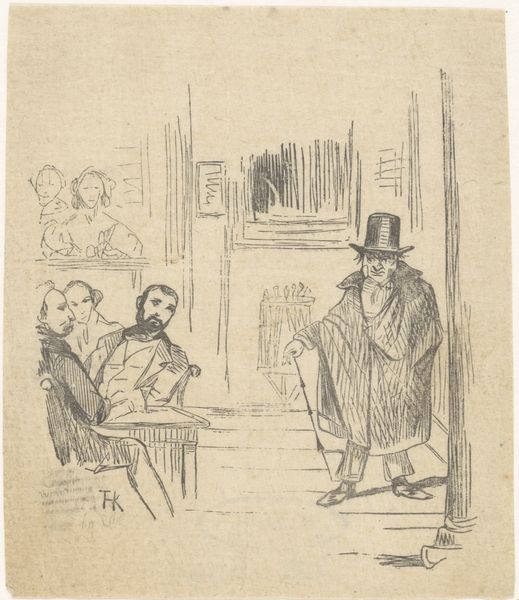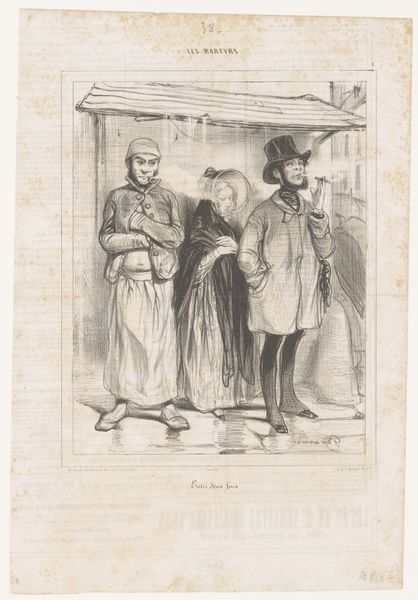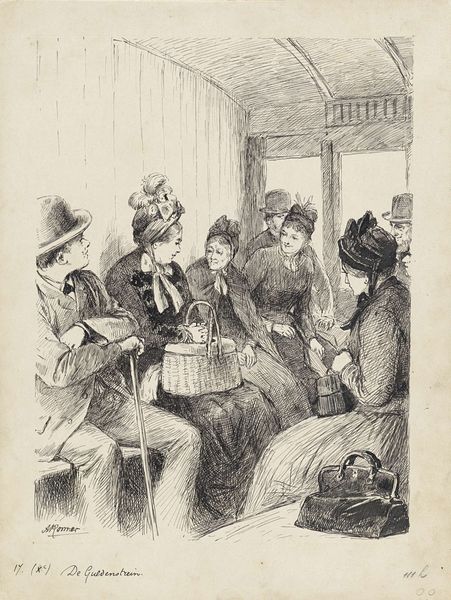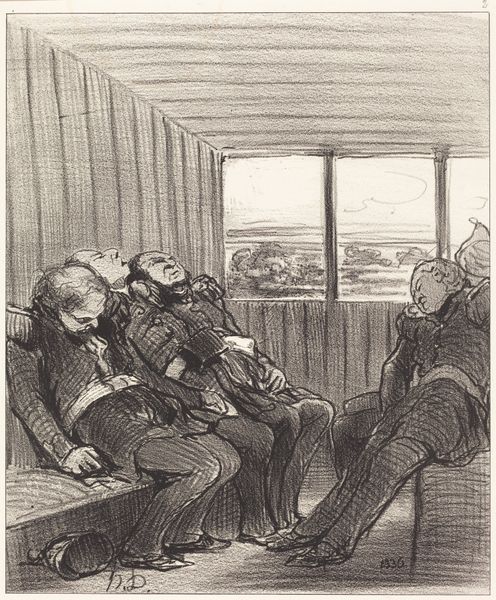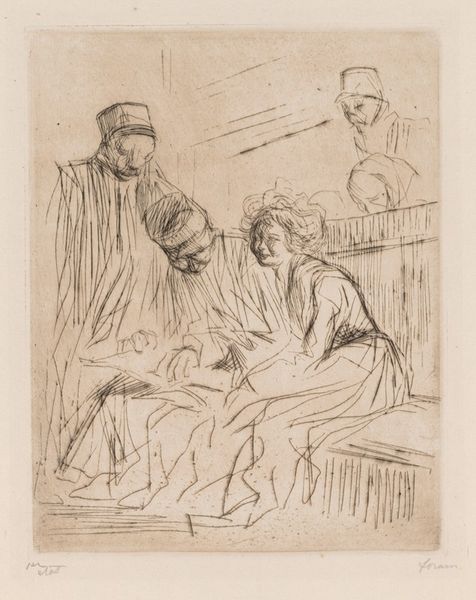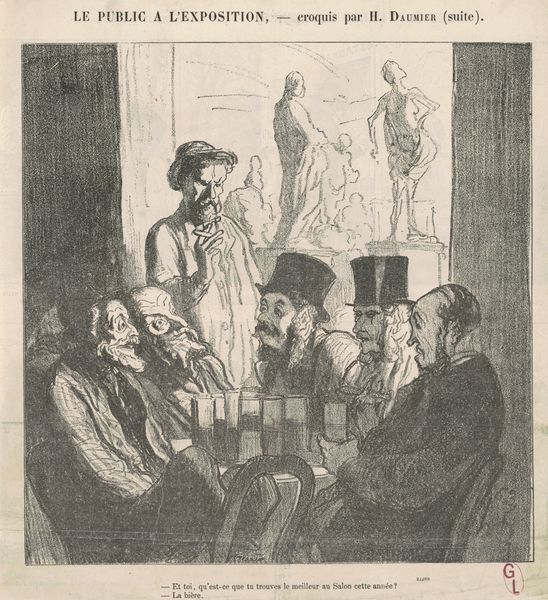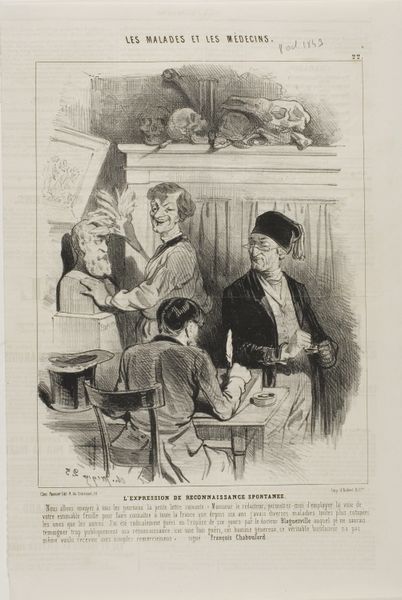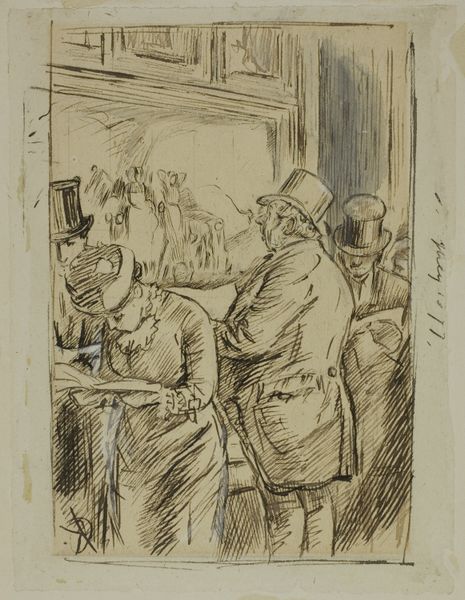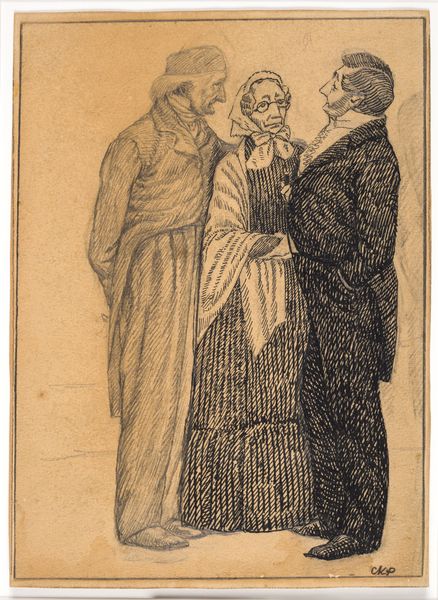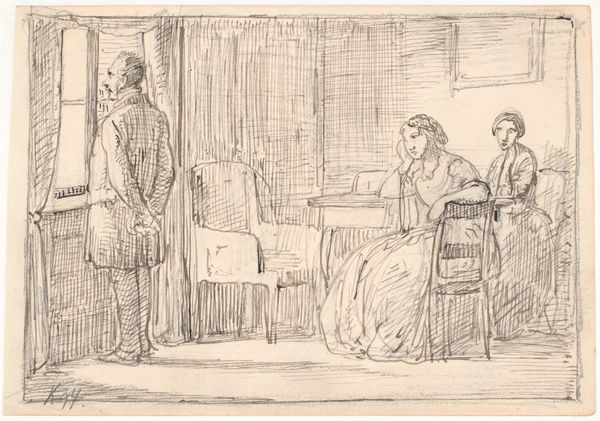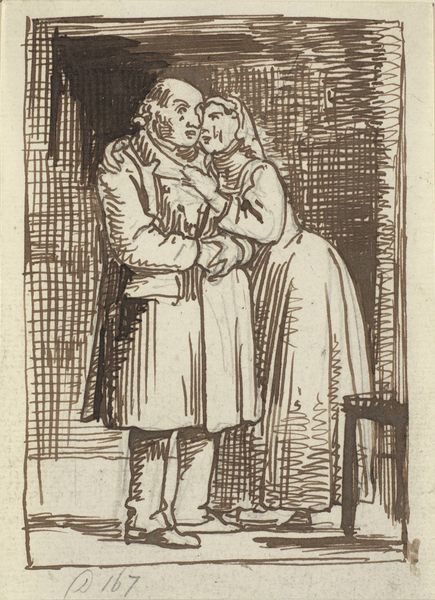
Actualités: Mme. Potard - N'est-il pas vrai, brave turco... 1859
0:00
0:00
Copyright: National Gallery of Art: CC0 1.0
Editor: This is "Actualités: Mme. Potard - N'est-il pas vrai, brave turco..." a lithograph print by Honoré Daumier, from 1859. It seems like a snapshot of a Parisian scene. The faces are so expressive! What do you see in this piece from a formal perspective? Curator: The lithograph's power lies in its masterful use of line. Observe how Daumier employs hatching and cross-hatching to generate form and volume. The figures are not merely depicted; they are constructed through an intricate network of lines, achieving a remarkable sense of depth. Notice how the line quality changes—bold and assertive in the foreground figures, softening to create distance. It gives the composition rhythm. Editor: So, it's the relationship between these marks that creates meaning, even more than the subject matter? Curator: Precisely. Semiotically, line operates as a signifier. Here, variations denote class, status, emotional state, revealing tensions inherent in social dynamics. Do you see how Daumier exploits the lithographic process to convey both surface realism and underlying structural forms? Editor: I can see that now. The density of the lines definitely changes, becoming darker to emphasize certain figures, drawing your eyes to the person in the center. Curator: Exactly. His choices articulate power relationships within the scene. What is suggested through his mark-making becomes the dominant feature, transforming it from a simple observation to an acute socio-political reading. Editor: That makes a lot of sense. I didn’t think of it as a formal encoding of these social observations. Curator: Considering the medium as integral to its meaning really deepens the artwork's message and impact. Thanks, that perspective was helpful for me too.
Comments
No comments
Be the first to comment and join the conversation on the ultimate creative platform.

